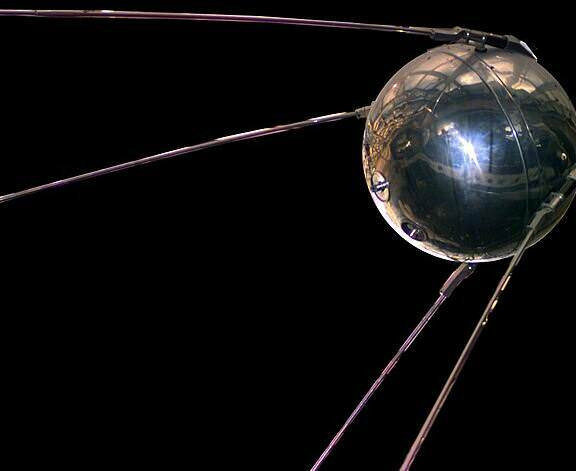Living in the era of space exploration has become commonplace for people. However, amidst the news of successful launches, it is often forgotten that the first artificial satellite was launched a mere 60 years ago. To learn more about the satellite and its subsequent models, check out the article on 24CMI.
Origin of the initial satellite
The origin of space exploration dates back to the creation of the first ballistic missile, known as the “Fau-2,” by German designer Werner von Braun. Test launches and military operations with this missile took place during World War II, where German forces utilized them for attacks on Great Britain.
Following the war, von Braun and numerous other Nazi scientists found themselves in the United States. There, von Braun surrendered to authorities and took charge of a division responsible for developing weaponry. In 1946, he introduced the American scientific community to his initial concept for a spacecraft capable of orbiting the Earth. It was noted that the design could be completed within a span of 5 years. However, due to insufficient funding, the project was put on hold.
Meanwhile, the Soviet Union took action with Joseph Stalin issuing an order to establish a rocket industry led by Sergei Korolev. Consequently, from 1946 to 1956, there was significant progress in the development of intercontinental ballistic missiles. The initial designs were labeled as “R-1”, “R-2”, and so on.
During the course of their work in 1948, designer Mikhail Tikhonravov presented a report to his colleagues on missiles and their calculations. The report advocated for the creation of vehicles capable of long-distance travel and launching satellites into orbit. However, the statement faced criticism and was not pursued further. Tikhonravov’s ideas were deemed irrelevant, leading to the disbanding of his department. Nonetheless, in 1950, the department was reassembled and serious discussions began regarding the launch of the first artificial satellite of Earth.
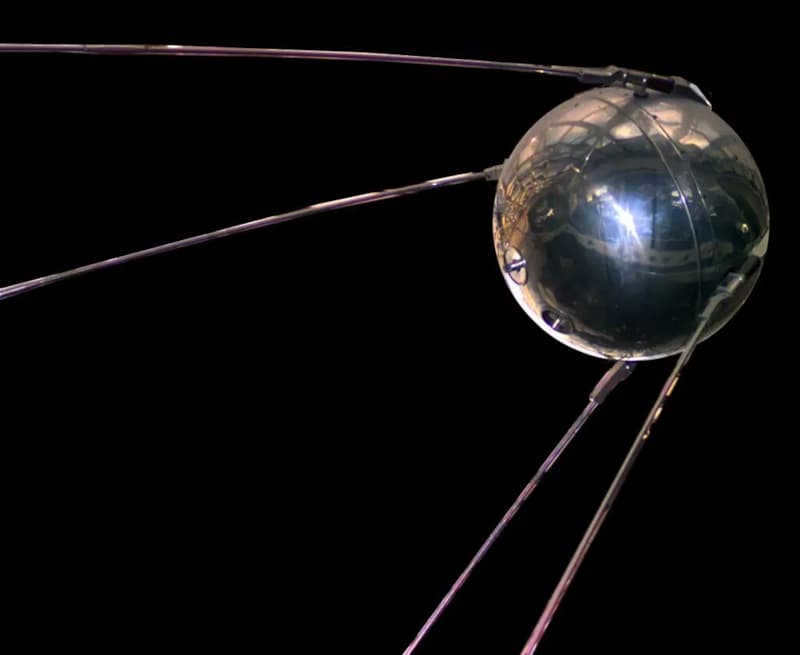
Following the development of an upgraded version of the ballistic missile known as the “R-3,” it became evident that its capabilities extended beyond striking military targets up to a distance of 3,000 kilometers. The missile also had the potential to launch satellites into space. In 1953, the country’s authorities embraced this groundbreaking concept, and the military leadership recognized the potential for its implementation.
As a result, a decree was issued in 1954, authorizing the formation of a dedicated group of scientists led by Tikhonravov to design and launch the satellite.
The development of the project started in 1956, and by the autumn of 1957, the initial model underwent successful testing in a thermal chamber and on a vibration test bench. The first artificial satellite of Earth was named quite simply as “Simplest Sputnik-1”.
Leading the creation of the first artificial satellite was Mikhail Tikhonravov, although it would be unjust to overlook the contributions of other scientists involved in the project such as Mstislav Keldysh, Nikolai Lidorenko, Boris Chekunov, and others.
Ultimately, the launch would not have been feasible without a launch vehicle, which was developed by a team under the guidance of Sergei Korolev, who was responsible for launching the first artificial satellite.
Initiating and Journey
In 1955, the Politburo, led by Khrushchev, gave the green light to establishing a testing area in the desert of the Kazakh SSR, later named Baikonur. It was here that they commenced the trials of R-7 ballistic missiles. However, it became evident through the launches that the original design was inadequate for satellite launches. Consequently, project manager Korolev proposed assembling a new model with a lightweight payload section capable of withstanding higher temperature loads.
The inaugural artificial satellite took on a spherical form, measuring 58 cm in diameter and weighing 83.6 kg. It featured four antennas, each measuring 2.4 and 2.9 meters, which were responsible for transmitting the signal.
On October 2nd, Sergei Pavlovich positioned the rocket carrying the satellite for launch. The inaugural launch of the first man-made satellite to orbit the Earth occurred on October 4th, 1957. At approximately 11:30 PM Moscow time, the rocket lifted off and entered orbit just 295 seconds later. Subsequently, PS-1 separated from the carrier and transmitted signals that were detected globally. Following this, it completed its initial rotation, and TASS subsequently announced the successful launch.
While in flight, the fuel supply system unexpectedly malfunctioned. Upon evaluating the transmitted signals received by observers at the test site, it appeared that the satellite would not be able to achieve the necessary velocity to enter orbit. However, this was not the case – PS-1 successfully reached an elliptical trajectory and remained in orbit for a duration of 92 days. Throughout this time, it completed a total of 1440 revolutions around the Earth. The orbital period around the planet was approximately 96.2 minutes.
When it came time to descend, Sputnik-1 reentered the Earth’s atmosphere and, due to the friction against its dense layers, completely burned up. This marked the beginning of the space age. In commemoration of this historic event, a monument was erected in the city of Korolev in 2007, depicting the first artificial satellite of the Earth, as shown in the photo below.

The global response and its significance for humanity
The launch of Earth’s inaugural artificial satellite held immense importance as it unveiled unexplored dimensions of outer space and enhanced our understanding of our planet’s place within the solar system.
By analyzing the initial signals received, scientists were able to investigate the ionosphere, a feat previously unattainable. This newfound information proved invaluable, aiding in subsequent calculations and the development of equipment for future missions.
Following the momentous event of October 1957, a surge of pride swept through the USSR. The nation released postage stamps featuring the PS-1 and other commemorative items to honor this significant breakthrough in Soviet science, generating great excitement among the people.
Conversely, the Soviet Union’s success dealt a heavy blow to U.S. prestige. An information frenzy swept across the globe, with the media exclusively focused on this achievement.
The American press reported that everyone in the USA had been confident that their country would be the first to launch a satellite. However, the USSR unfortunately beat the United States, forever dispelling any notions of its technological backwardness. Furthermore, there was no doubt about the authenticity of this achievement, as the satellite’s call signs could be intercepted by any amateur radio operator.
The Americans grasped the significance of the event and did not hide their concern, asserting that both the government and the general public are constantly preoccupied with the triumph of the USSR. The New York Times stated that going forward, America would have to reassess its trajectory of progress, as a Soviet missile was now assuredly capable of not only launching a satellite into space, but also transporting a hydrogen or atomic bomb over vast distances.
It wasn’t just the United States that responded. For instance, German newspapers covered how, following October 4, the trajectory of strengthening and the Cold War, which had been steadily escalating until then, suddenly lost all meaning. Additionally, Indian Prime Minister Jawaharlal Nehru noted that the Soviet launch would have no impact on the global situation – except for the fact that it would help people recognize the futility of war.
Satellites Launched First in Other Countries
Following the launch in October 1957, a fierce competition for space dominance began around the world. The United States, determined to surpass the USSR, aimed to be the first to send a spacecraft to the Moon. Their goal was to launch their own satellite into orbit as quickly as possible. However, once again, the Soviets outpaced them with their second launch.
After Sputnik-1, Sputnik-2 successfully took off from Baikonur on November 3 of the same year. Weighing 508.3 kg, this satellite made history by carrying a living creature into space – a dog named Laika. Sputnik-2 had a conical capsule design, with a base diameter of 2 meters and a height of 4 meters. Inside the capsule, in addition to the compartment for the dog, there were isolated sections for research equipment:
- Program module
- Radio transmitter
- a system for collecting and transmitting data;
- a device for regulating temperature;
- a system for renewing or restoring something.
After a month, the United States introduced a telemetry system, a temperature control device, and a regeneration system.
After a month, the United States introduced a telemetry system, a temperature control device, and a regeneration system. A month later, America came up – it scheduled the first launch of its own satellite for December 6. The event was advertised, they promised to catch up and overtake the USSR.
Their device was called Vanguard TV3, weighed 1.36 kg, and had a diameter of 152 mm. On the day of the launch, hundreds of privileged spectators and reporters gathered in the pad area. The cameramen captured the launch, though unsuccessfully. The apparatus rose 120 centimeters above the ground, and a couple of seconds later collapsed near the launch point.
The failure was immense. American scientists were left with no choice but to seek assistance from the army’s developers, led by former Nazi von Braun. It was only through a series of investigations that the United States of America successfully launched its own satellite into orbit. This historical event took place on February 1, 1958. The satellite was named Explorer 1 and weighed 4.5 kg. It contained a meteor particle sensor and a Geiger counter.
Explorer 1 had a larger orbital radius compared to Sputnik 1. At the lower point of its elliptical orbit, the Geiger counter detected cosmic radiation. However, at the upper point, the radiation was so intense that the Geiger counter went off the scale and could not provide any data. This led to the hypothesis that there were radiation belts surrounding the planet, which subsequent studies later confirmed.
Explorer 1 continued to function until 1970, but ceased sending signals on February 28, 1958. Following that, both the United States and the Soviet Union continued to launch spacecraft (both before and after Gagarin’s flight), gathering additional scientific information. However, the initial creation of an artificial satellite was the result of the efforts of Soviet scientists, and this historical event will forever be remembered.
“Sputnik-1” – the initial man-made satellite to orbit the Earth.
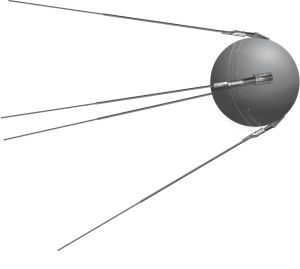
In October 4, 1957, the Soviet Union made history by launching the Sputnik-1 spacecraft, signaling the start of the space age and igniting the Cold War space race. This competition reached its climax in July 1969, when Neil Armstrong and Buzz Aldrin, the astronauts of Apollo-11, stepped foot on the Moon’s surface.
“Sputnik 1 had the dimensions of a beach ball”
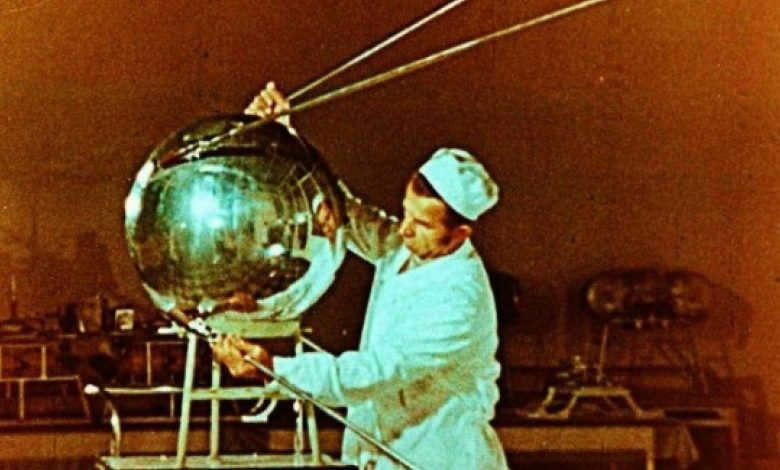
PHOTO: Sovfoto/UIG via Getty
The size of “Sputnik 1” was relatively small compared to modern spacecraft, which can be as large as a small bus.
With a weight of 83.6 kilograms and a diameter of 0.58 meters, PS-1 (the satellite’s codename was “Prostyshiy Sputnik-1”) consisted of two aluminum-magnesium hemispherical shells connected by 36 studs. Two antennas were located on the upper half-shell, positioned crosswise and facing backwards. The VHF antenna was 2.4 meters long, and the KV antenna was 2.9 meters long.
Following the USSR’s successful launch of its inaugural satellite, the United States made an endeavor to launch its own 1.6 kg satellite known as Vanguard Test Vehicle 3. Regrettably, the attempt proved fruitless as the Vanguard launch vehicle experienced a loss of thrust merely two seconds after liftoff, resulting in a catastrophic explosion. Consequently, the satellite sustained significant damage and was rendered unviable for future use.
The Soviet Union had an aspiration for greater achievements
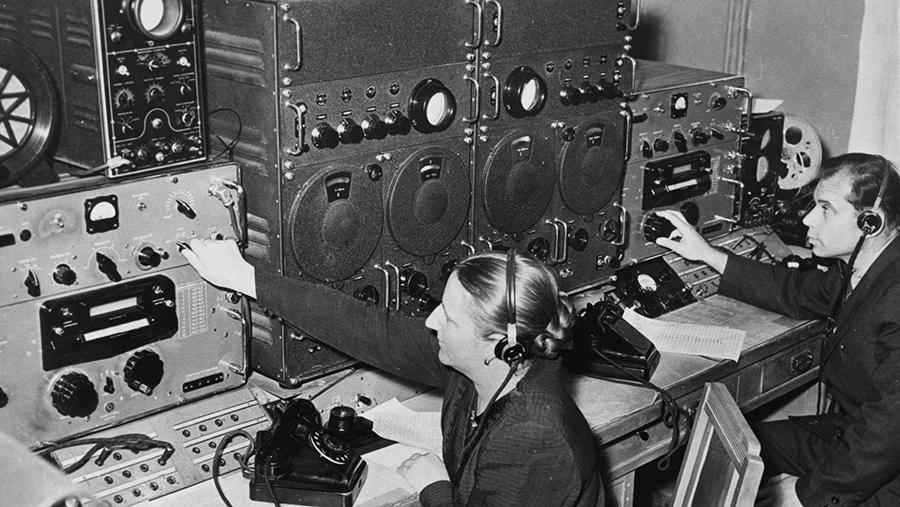
The radio signals from the satellite were being monitored by employees at a radio center near the Moscow Observatory in 1957.
Originally, the Soviet Union had plans to launch a fully equipped spacecraft with all the modern spacecraft systems. However, by the end of 1956, it became evident that there were difficulties in developing scientific instruments for Object D (Sputnik-3), and the lower-than-expected specific impulse of the R-7 rocket posed a threat to the schedule.
At the same time, the United States selected the International Geophysical Year, which officially started on July 1, 1957, as the ideal time to launch their first satellite. In order to meet the important deadline for getting the satellite into orbit, OKB-1 suggested to the Soviet government that they replace the development of Object D with the more realistic Prostranstvo Sputnik.
While Sputnik-1 did not have any scientific instruments, the study of its radio signals and observations of its orbit provided valuable scientific data.
Object D eventually reached orbit as Sputnik-3 in May 1958, six months after Sputnik-2, which famously carried a dog named Laika into space.
The satellite launch came close to failure
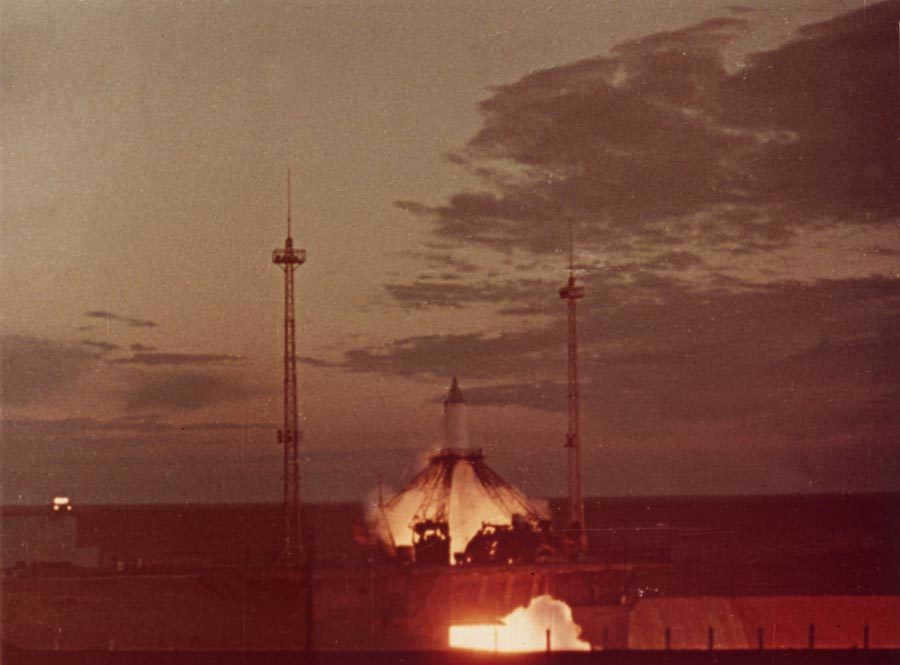
On October 4, 1957, the R-7 launch vehicle (8K71PS) successfully launched the artificial satellite “PS-1”.
The R-7 ICBM, which launched “Sputnik-1”, was composed of four first stage boosters (blocks “B”, “C”, “G”, and “D”) positioned around the main second stage (block “A”). The main engine of the “G” booster achieved the desired thrust level slightly later than anticipated during the launch.
As a consequence, the rocket initiated a roll 6.5 seconds after takeoff, deviating approximately one degree from its intended path eight seconds later. In an attempt to correct the increasing angle of ascent, the primary stage’s No. 2 and No. 4 rudder engines were adjusted by eight degrees; the corresponding engines on the B and D Block boosters were adjusted by 17 to 18 degrees, and the tail air rudders were adjusted by 10 degrees.
Mere moments remained before the flight control system would terminate the flight of the underpowered rocket. Thankfully, the engine eventually returned to normal operation, and the rocket fully realigned with its intended trajectory between 18 and 20 seconds after liftoff.
Ultimately, PS-1 entered an elliptical orbit with an apogee of 947 km, a perigee of 288 km, and an initial orbital period for Sputnik-1 of 96.2 minutes.
The mission was brief
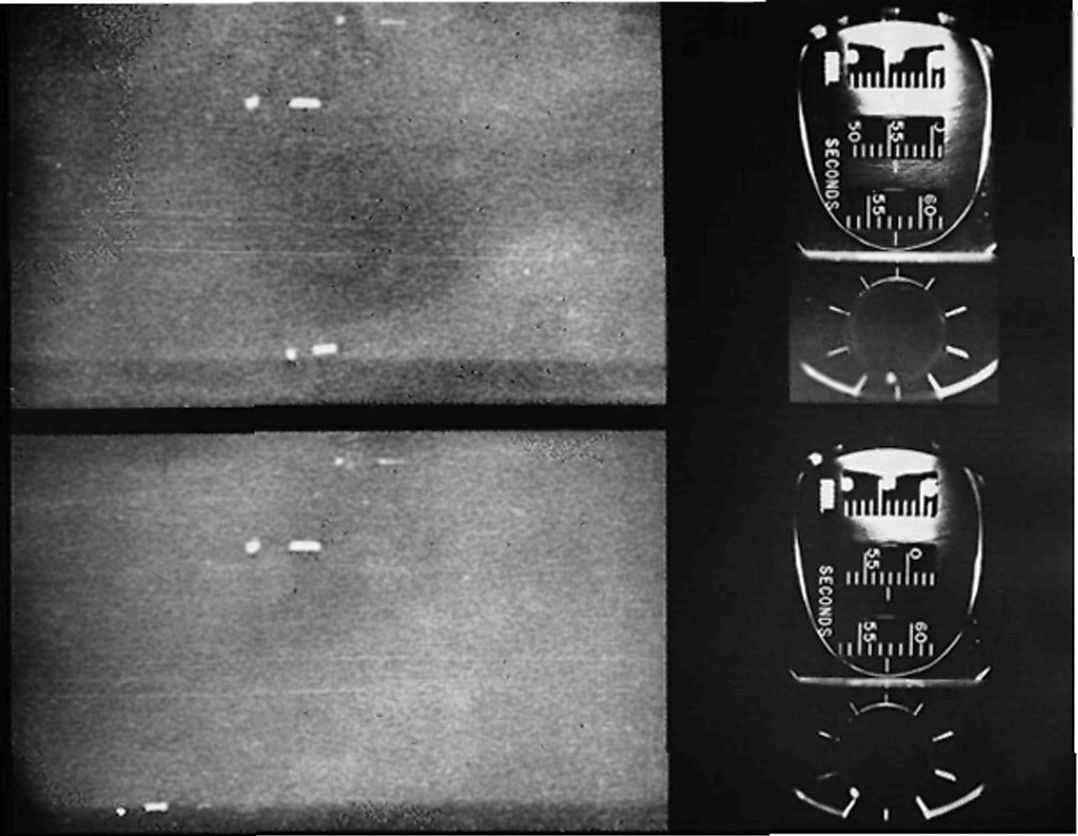
The Southern California Observatory telescope captured the first official image of the Soviet satellite on October 17. Its identity as a satellite was confirmed by its movement relative to two stars in the constellation Ascendant.
Photo: Smithsonian Astronphysical Observatory / NASA
The satellite was equipped with three silver-zinc batteries intended to last for two weeks. However, the batteries surpassed expectations and the satellite continued to transmit radio signals for 22 days.
The satellite remained in its orbit for a total of 92 days, completing approximately 1,440 revolutions around the Earth, which is equivalent to covering a distance of about 60 million kilometers. However, as a result of encountering friction with the upper atmosphere, the satellite gradually lost speed and eventually entered the denser layers of the atmosphere. On January 4, 1958, the satellite ultimately burned up and disintegrated.
Interestingly, the majority of observers who witnessed the satellite were actually seeing the rocket that launched it into space.
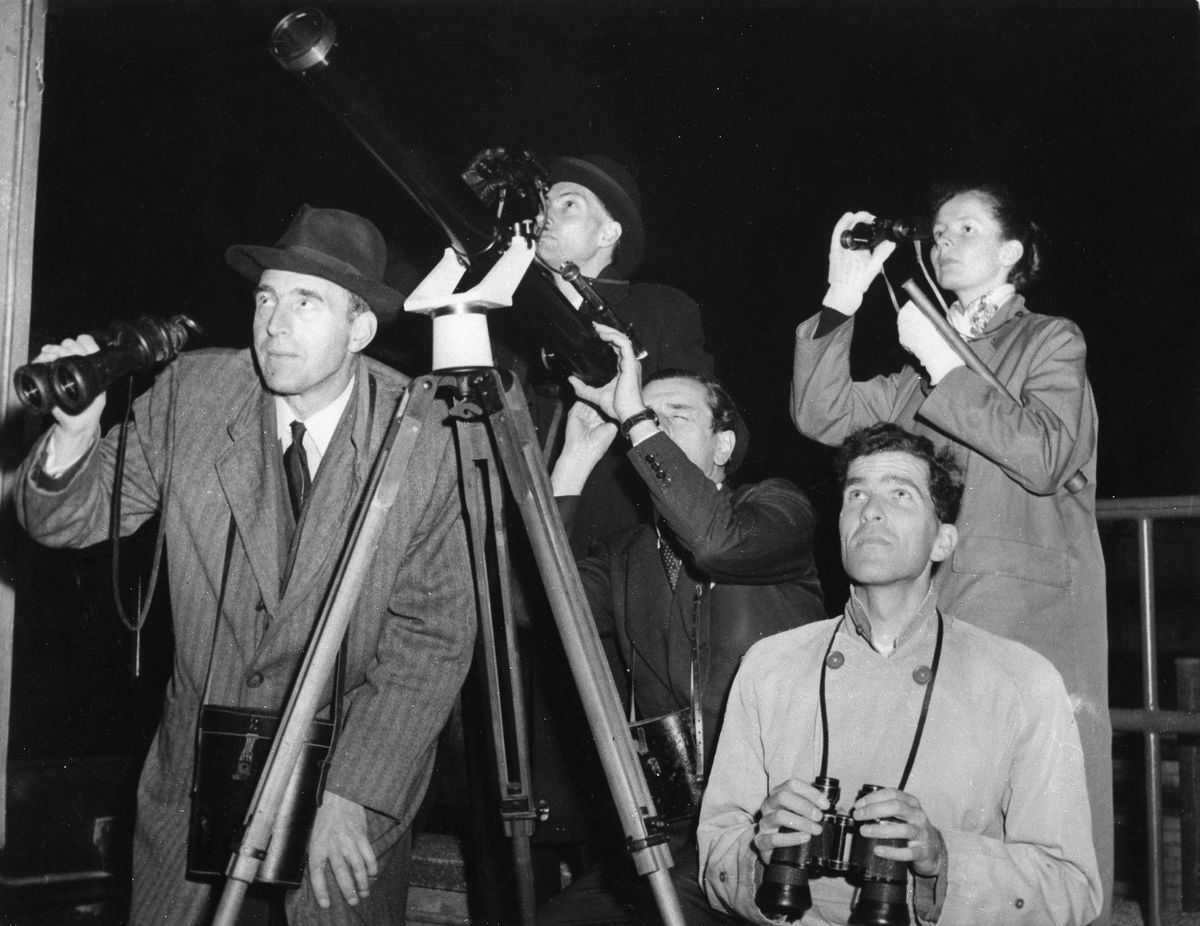
Observers from London, who have an interest in astronomy, witnessed the flight of the satellite.
Photo: Getty Images/ullstein bild Dtl
In the late 1957, numerous individuals reported spotting a satellite in the night sky, however, experts suggest that the actual satellite was not easily visible without the aid of binoculars or a telescope. The satellite’s reflective surface was relatively small, making it challenging to observe with the naked eye. Even under ideal viewing conditions, the satellite appeared as a 6th magnitude object, which is at the threshold of human visibility without any optical aid.
Typically, the satellite itself was not directly seen, but rather a larger entity – the second stage of the R-7 carrier. This rocket stage, measuring 26 meters in length, also achieved orbit and was equipped with reflective panels for easier tracking. Departing orbit before the satellite on December 1, 1957, the second stage of the launch vehicle completed 882 revolutions around the Earth.
“Sputnik 1” sparked the establishment of NASA and DARPA
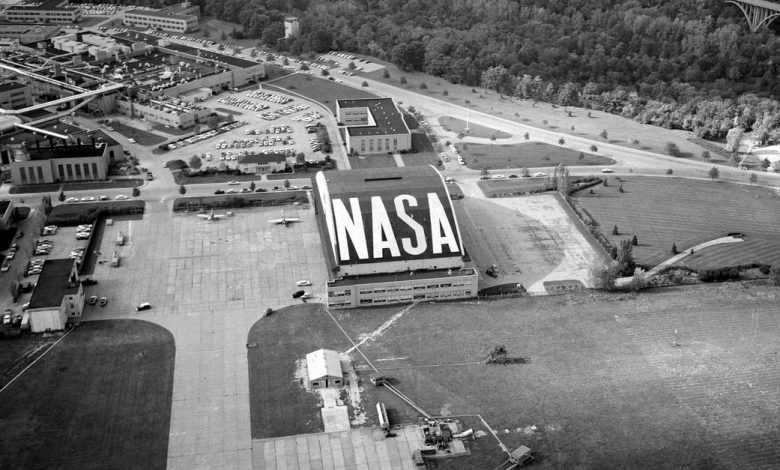
In 1958, the NASA hangar at Ohio State’s Lewis Research Center (now Glenn Research Center) became the birthplace of a groundbreaking event. This event caused a global sensation and captured the fascination of people around the world.
What caused this worldwide commotion? It was the sight of a small man-made star soaring through the sky beyond the Earth’s atmosphere, emitting a continuous and unmistakable radio sound – “beep-beep-beep-beep”. This captivating spectacle left a lasting impression on a vast audience.
“According to a 2007 article by NASA historians commemorating the 50th anniversary of the event, Sputnik 1 garnered global and American public attention due to its remarkable technical feat. Its dimensions were even more remarkable when compared to Vanguard’s projected payload of 1.6 kilograms. Furthermore, the public was apprehensive about the Soviet Union’s potential to not only launch satellites but also to launch ballistic missiles capable of delivering nuclear weapons from Europe to the United States.”
These fears did not diminish following the successful launch of the United States’ inaugural satellite, Explorer-1, on January 31, 1958. American officials implemented several measures to enhance the nation’s technological prowess. These initiatives encompassed the establishment of the Advanced Research Projects Agency (which would later be renamed the Defense Advanced Research Projects Agency or DARPA) in February 1958, as well as the formation of NASA in October of the same year. (The forerunner to NASA, the National Advisory Committee on Aeronautics, had been in existence since 1915.)

At 22:28:34 Moscow time on Friday, October 4, the Baikonur Cosmodrome successfully launched the world’s inaugural man-made satellite. While it could only transmit basic “beep-beep-beep-beep” signals, this Soviet Union-launched artificial satellite had a profound impact on the world. In this lesson, we will delve into the details of how this monumental event unfolded.
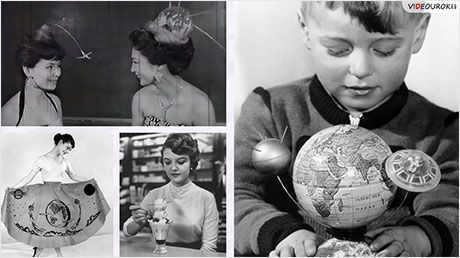
Unfortunately, it is currently not possible to view or distribute the instructional video with students
In order to gain access to this and other instructional videos included in the package, you must add it to your personal account.
Unlock amazing possibilities


Outline of the Lesson “The First Artificial Earth Satellite”
On October 4, 1957, millions of amateur radio operators around the globe were able to tune in to what, at first glance, seemed like an ordinary sound. Little did they know, this was a significant moment that would mark the beginning of the era of space exploration for humanity. Those seemingly unremarkable “beeps” were actually the sounds emitted by the world’s very first man-made satellite to orbit the Earth. Approximately 314.5 seconds after launch, the Sputnik spacecraft detached from the rocket’s upper stage and began transmitting its signal. The excitement was palpable at the launch site, with people pouring out onto the streets, cheering, and celebrating the remarkable achievement of the engineers and military personnel involved in this historic mission.
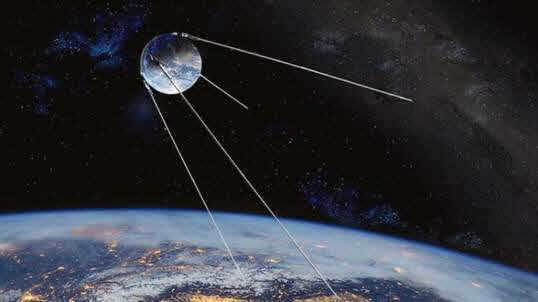
Indeed, it had the capability to solely transmit uncomplicated “beep-beep-beep-beep” signals. Nevertheless, it stood as the inaugural man-made satellite to be launched in the USSR, which resulted in a profound transformation of the world.
The significance of this event was so immense that the renowned American writer Ray Bradbury expressed, “On that particular night when Sputnik initially streaked across the sky, I gazed upwards and contemplated the predetermined fate of the future. For that diminutive illumination, swiftly traversing from one end of the horizon to the other, represented the future of all humankind. That faint light in the vast expanse above symbolized the attainment of immortality for mankind. Mankind was bestowed with the imperative of achieving immortality, and that luminosity in the celestial realm above me served as the initial glimpse of such an extraordinary feat.”
For a long time, individuals have harbored aspirations of developing a synthetic satellite. The initial endeavors to validate the feasibility of such an invention can be attributed to the revered English scholar, Isaac Newton. Newton postulated, “Should one cast a stone horizontally from a lofty mountain, it shall follow a parabolic path, eventually succumbing to Earth’s gravitational pull. However, should the stone be propelled with greater velocity, it shall traverse a greater distance before succumbing to gravity. Nevertheless, owing to the Earth’s spherical shape, the stone shall perpetually diverge from the Earth’s surface as it traverses its trajectory.”
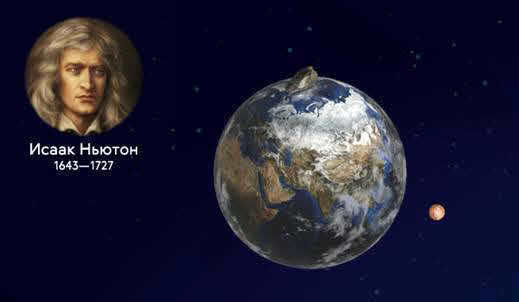
As a result, it is feasible to select a specific velocity for the stone, where the curvature of the Earth’s surface will offset the stone’s gravitational pull. Thus, the object will maintain a constant distance from the Earth’s surface and effectively become an artificial satellite.
Subsequent calculations indicated that any object, regardless of its mass, can serve as an artificial satellite of the Earth. The key requirement is that the object must attain a horizontal velocity of approximately 8 km/s, which was not technologically feasible at that time.
Published only in the early 1900s, an article written by the pioneer of theoretical cosmonautics, Konstantin Eduardovich Tsiolkovsky, titled “Exploration of World Space by Jet Instruments,” argued that the only apparatus capable of space travel is a rocket. In subsequent articles, Tsiolkovsky also explored the potential of using liquid rocket engines for propulsion. By the late 1920s, he was able to calculate the required amount of fuel needed to achieve escape velocity and leave Earth. His calculations revealed the necessity of using “rocket trains” as prototypes for the modern multistage rockets we have today.
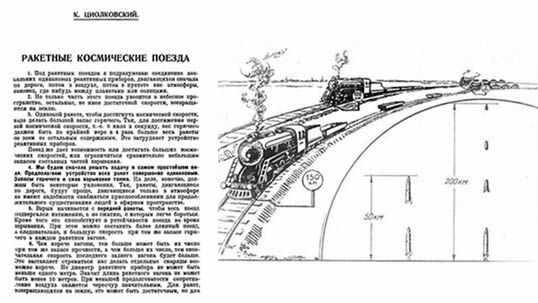
The concept of utilizing a liquid jet propulsion system captivated numerous researchers, including Hermann Oberth from Germany and Robert Goddard from the United States. By the conclusion of 1925, Goddard successfully developed a functional prototype of a liquid jet engine.
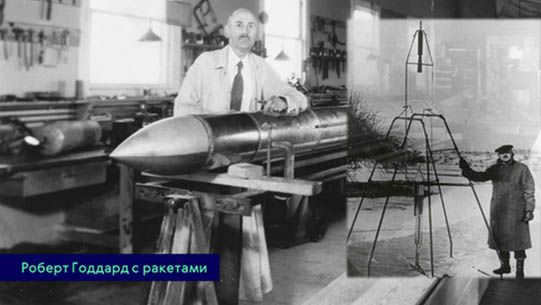
The work carried out by Tsiolkovsky, Obert, and Goddard was continued by various groups of rocket enthusiasts in the United States, Soviet Union, and Germany. It is worth mentioning that in the Soviet Union, the Jet Propulsion Research Group in Moscow, led by Sergei Pavlovich Korolev, and the Gas Dynamic Laboratory in Leningrad conducted extensive research. These efforts led to the establishment of the Jet Institute in 1933, which successfully launched the first Soviet rocket, known as “GIRD-09,” on August 17 of the same year. This rocket was able to reach a height of 1.5 kilometers. Subsequently, on November 25, the rocket “GIRD-X” achieved an impressive altitude of 5 kilometers.
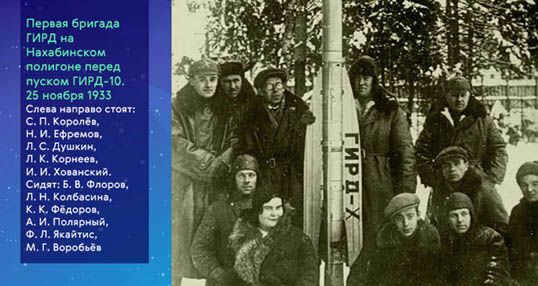
However, it is worth noting that soon after, a significant slowdown occurred in the progress of the project. This was mainly due to the fact that a number of individuals working at the Jet Institute, including Korolev, were accused of engaging in acts of sabotage. As a result, they were sentenced to various terms of imprisonment, which led to a suspension of work for a period of time.
Meanwhile, in Germany, the development of jet engines was underway, with Werner von Braun leading the efforts. In December 1932, he assumed responsibility for this task. Eventually, von Braun successfully created an engine that was utilized in the experimental rocket known as the “Fau-1”. This rocket was launched from the island of Borkum on December 19, 1934.
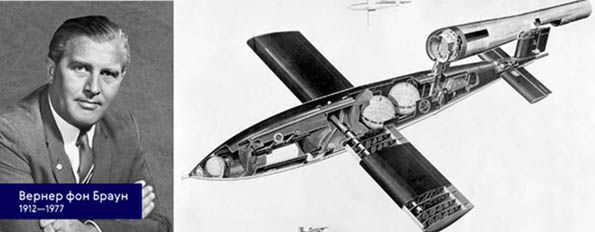
Following Hitler’s rise to power in Germany, the government of the country set aside funds to support the advancement of rocket weaponry. In the spring of 1936, the construction of a rocket center in Peenemünde was approved, with Werner von Braun appointed as its technical director. In March 1942, the first ever launch of the “Fau-2” ballistic missile, developed by von Braun, took place. While von Braun was busy designing rockets in Germany, Korolev was struggling to survive in prison camps. This highlights the significant influence of the German engineer, as his “Fau-2” was already instilling fear in London while Korolev was just beginning to regain his freedom.
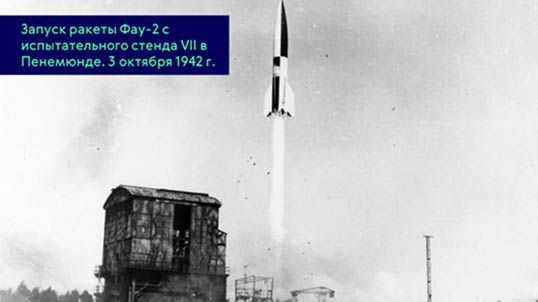
Following Germany’s loss in World War II, Wernher von Braun became a prize that the Americans acquired, along with all the advancements on the “Fau-2”. The Soviet scientists were left with only small fragments, one of which was studied by Sergei Korolev.
The initial success of the Soviet Union in the space race may not have occurred if it were not for the intervention of U.S. President Harry Truman. Following the testing of the atomic bomb on Hiroshima and Nagasaki, Truman was determined to quell the “red threat”. The USSR, surrounded by a network of hostile military bases, was compelled to find a suitable response. After successfully developing their own atomic bomb in 1949, the Soviet leadership was faced with the challenge of effectively delivering it to its intended target. It was at this point that the “Fau-2” technology, which had been studied and improved by Sergei Pavlovich Korolev, proved to be invaluable.
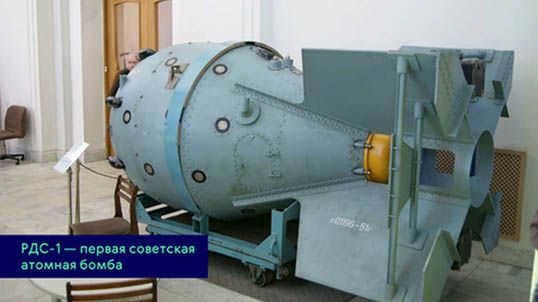
In the meantime, on the opposite side of the world, the U.S. government was contemplating space conquest. Despite having Wernher von Braun, a renowned rocket scientist, on their side, they decided to entrust the development of the first American satellite to the U.S. Navy laboratory. This decision resulted in a major embarrassment. The highly publicized satellite, along with the rocket, only managed to lift off the ground by a few centimeters before exploding.
Meanwhile, on the other side of the Iron Curtain, Korolev continued to make significant advancements in Fau-2 technology. By the beginning of 1953, he had completely abandoned this technology and started working on the development of entirely new types of rockets.
The Decree of the Central Committee of the CPSU and the Council of Ministers of the USSR “On the implementation of efforts to develop a synthetic satellite of the Earth” was officially approved on January 30, 1956.
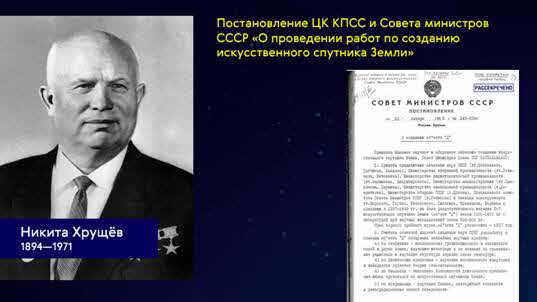
There was a peculiar situation surrounding the satellite project. Sergey Pavlovich was enthusiastically discussing the satellite in various forums, while Mikhail Klavdievich Tikhonravov was deeply involved in its development. The USSR Academy of Sciences even included artificial satellites in their research program. Eventually, a decree was issued to officially create an artificial Earth satellite. However, there was a catch… no one had plans to actually launch the satellite. The focus was primarily on the development of intercontinental ballistic missiles, with the satellite mentioned almost reluctantly. In fact, the launch of the satellite could only happen after successful tests of the R-7 rocket.
Boris Evseevich Chertok, the closest associate of Korolev, stated: “Following a successful launch of an intercontinental rocket, one could take a moment to assess the situation. The concept of space was not taken seriously by anyone at that time. High-altitude launches involving animals for scientific purposes were considered secondary. Only Korolev had the foresight to think about space…”
The process of designing the first satellite didn’t begin until November 1956. Three different versions of the first satellite were proposed:
A basic one with a small transmitter inside;
A simplified one with a cabin for a dog (essentially a satellite designed for animal occupancy);
And a scientific satellite equipped with advanced instruments for both Earth and space exploration.
In the beginning of 1957, the initial trials of an intercontinental ballistic missile commenced. Nonetheless, the inaugural set of trials was highly unsuccessful and exposed significant design deficiencies. Nevertheless, the persistent Korolev remained steadfast in his pursuit: “There are reports indicating that the United States plans to launch an artificial satellite in 1958 in light of the International Geophysical Year. We run the risk of losing our precedence. I propose that we launch the most basic satellite instead of a complex laboratory – the object “D” – into space.”
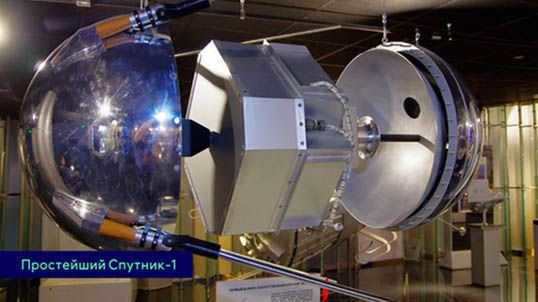
The satellite’s structure comprised of two hemispheres made of aluminum alloy, each with a diameter of 58 centimeters. These hemispheres were connected together using 36 bolts, with a rubber gasket ensuring a tight joint. The upper half-shell of the satellite featured two corner vibrator antennas, consisting of two arm-pins intersecting each other. Inside the body of the satellite, various components were placed, including silver-zinc batteries, a radio transmitting device, a fan, a thermorelay, an air duct for the thermal control system, and temperature and pressure sensors. In total, the satellite weighed 83.6 kg.
Ultimately, the R-7 rocket, which was launched on August 21, 1957, successfully completed the entire flight program. Korolev recognized that the pathway to space was now open.
By the beginning of September, the construction of the initial man-made satellite had been completed. It underwent testing on Earth, and calculations for the satellite’s trajectory were initiated. According to the recollections of Georgy Grechko, the future astronaut, these calculations were carried out using electromechanical calculators that resembled arithmometers in design. It was only during the very last stage that they were connected to one of the country’s earliest computers.
On October 2, 1957, Sergei Pavlovich Korolev issued a decree for the flight trials of the PS-1 and dispatched it to Moscow. Without awaiting a response, he made an independent decision to position the rocket for launch.
At 22:28:34 Moscow time on October 4th, a successful launch took place. 314.5 seconds after liftoff, the launch vehicle separated from PS-1 and emitted its distinctive sound. The iconic “Beep! Beep!” echoed across the entire globe.
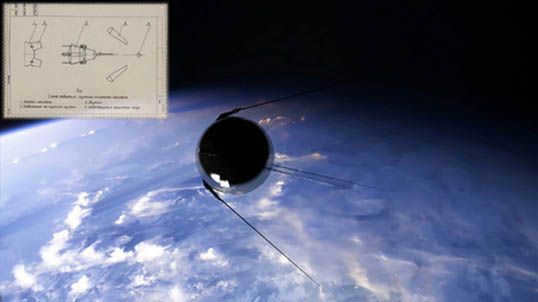
It was only after the initial signals from Sputnik were received that the results of processing the telemetry data became available, revealing that the project was only a fraction of a second away from failure. Boris Evseevich Chertok recalls: “Just a little more, and we wouldn’t have achieved the first space velocity. But winners aren’t judged! The important thing is that we succeeded!”
The satellite remained in orbit for 92 days, completing 1440 revolutions around the Earth. For two weeks after its launch, radio amateurs from around the world were able to hear its signal.
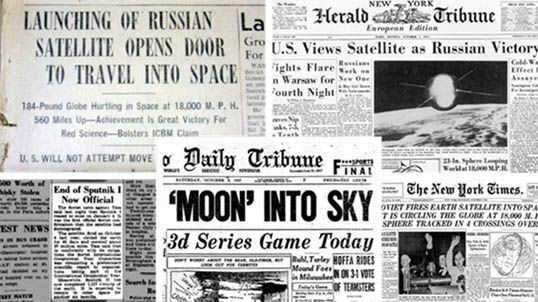
However, for the majority of individuals, the satellite symbolized a new chapter in the history of humanity – the era of space exploration. Sergei Pavlovich Korolev, the mastermind behind this monumental triumph, remained undisclosed and unrecognized by the world for an additional 9 years. Even the Nobel Committee, planning to bestow an award upon the creator of the inaugural satellite, received a succinct response from the USSR government: “This is a triumph of the entire Soviet populace.”
Nevertheless, the chief designer was not particularly perturbed by this. Up ahead, there awaited the likes of Laika, Belka and Strelka, photographs of the far side of the Moon, and, naturally, the first human to venture into space.
In the United States, Wernher von Braun was experiencing a moment of setback. Even though the government granted him the satellite undertaking, it was already too tardy – the task of catching up with Korolev was insurmountable. The inaugural American satellite, Explorer-I, would not ascend into the cosmos until February 1, 1958.
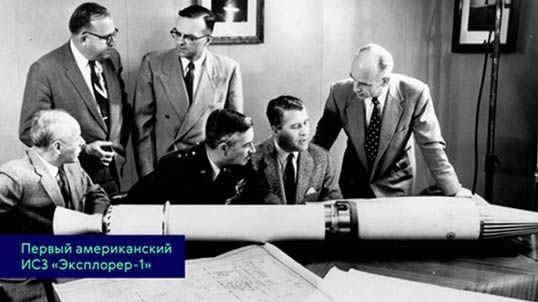
Von Braun’s defeat in the space race against Korolev would only be avenged when a man finally set foot on the moon. However, the talented Sergei Pavlovich would not live to witness this victory. He would remain undefeated.
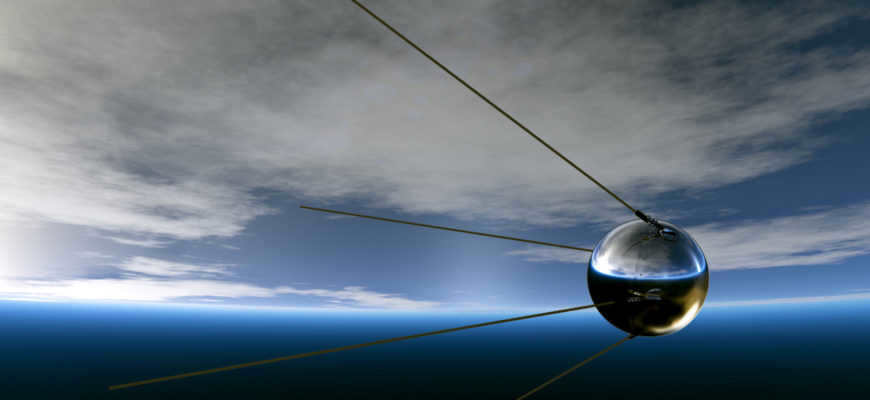
Not all individuals in the present day are aware of the precise individual who was responsible for the creation of the inaugural man-made satellite orbiting the Earth. This groundbreaking achievement was accomplished within the confines of the Soviet Union on October 4, 1957. On this momentous occasion, radio stations across the globe ceased their regular broadcasts in order to disseminate this momentous news. Furthermore, the term “satellite” started to be employed in various languages across the world. This event marked an exceptional milestone in the exploration of space by humankind.
What prompted humans to launch a satellite?
In 1957, the Soviet Union launched the “Simplest Sputnik-1” at the Tyura-Tam test site. This device was created and launched by a team of scientists to achieve the following objectives:
- To verify the technical capabilities of the device and assess the accuracy of the launch calculations.
- To investigate the ionosphere by examining the interaction between radio waves emitted by the satellite in space and their transmission through the Earth’s atmosphere.
- To determine the density of the upper layers of the atmosphere by observing the decreasing velocity of the spacecraft.
- To study the effects of the space environment on the satellite and identify optimal conditions for its operation in space.
The first artificial satellite did not have any scientific hardware onboard, but its launch provided scientists with valuable technical data and important scientific information. For instance, studying the satellite’s movement and analyzing the radio signals it transmitted yielded significant insights.
The launch of the initial Earth satellite marked the beginning of a new era in space exploration, sparking a competition between the USSR and the USA.
The Birth of the First Satellite
The first satellite came into existence through the collaborative efforts of a scientific team led by Mikhail Tikhonravov. Concurrently, Sergei Korolev spearheaded the production of the carrier rocket and the launch of the satellite into orbit. Numerous other researchers also contributed to these scientific endeavors.
The development of an artificial satellite commenced in November 1956. It was designed as a device equipped with two radio beacons to facilitate trajectory measurements. The transmitter frequencies were carefully chosen to enable radio amateurs to receive the satellite’s signal without the need for any modifications to their equipment.
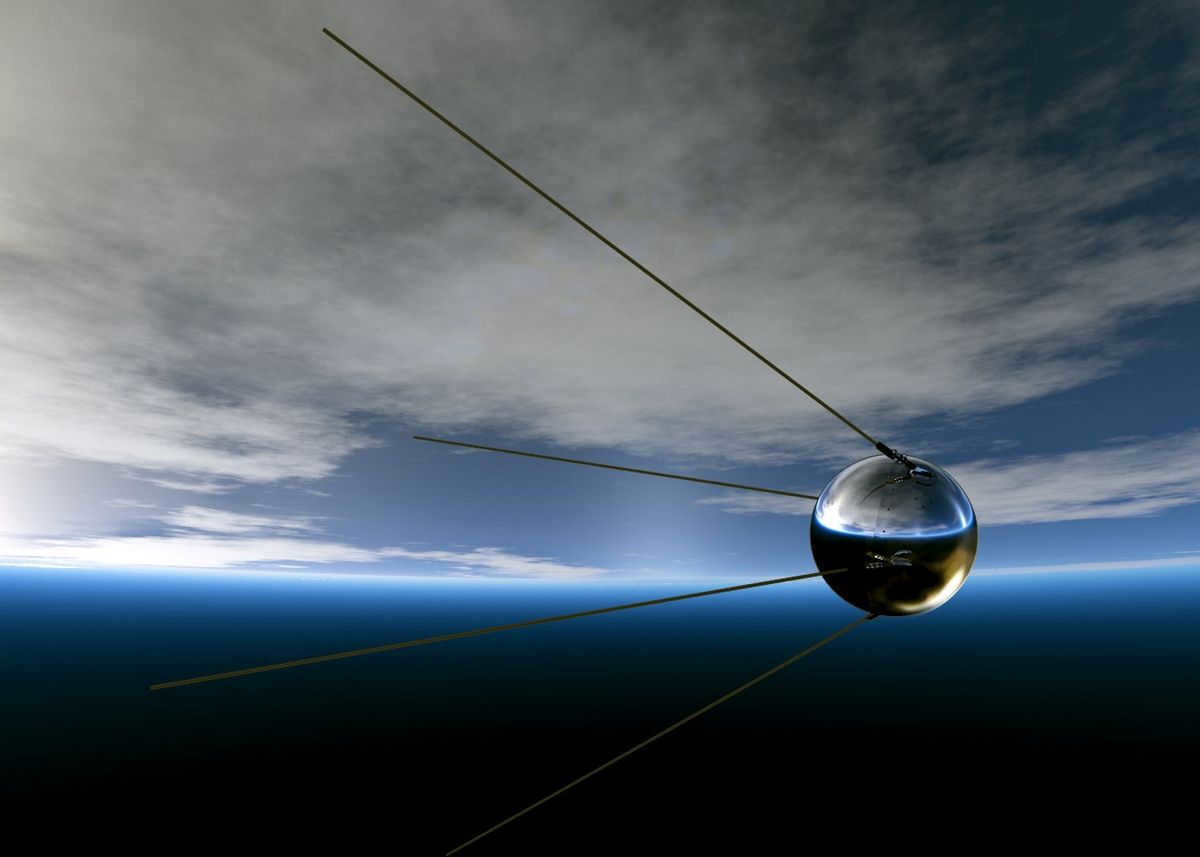
In order to establish the path of the vehicle’s orbit, initial calculations were conducted utilizing electromechanical counting devices. The electronic counting apparatus was solely utilized during the concluding phases.
“Sputnik-1 possessed a spherical form. It had a diameter of 58 centimeters and a mass of slightly more than 80 kilograms. The air-tightened structure was constructed from an aluminum alloy, with internal compartments housing batteries capable of sustaining a charge for 2-3 weeks as well as radio equipment. Four antennae were situated on the exterior.”
Device Testing
When were the device tests conducted? They took place in the first half of September 1957. During this time, the “Simplest Sputnik-1” successfully completed the final stage of experiments. On September 22, the R-7 rocket was transported to Tyura-Tam. It was notably lighter than the standard rockets, weighing 7 tons less.
On September 26, the CPSU Central Committee made the decision to launch the device in mid-October. Simultaneously, on October 2, Korolev signed a document regarding the flight tests of the device and sent a notice of readiness to Moscow. However, the instructions were not followed as expected. As a result, the scientist himself decided to proceed with installing a launch vehicle with the satellite.
Launching and Outcome
The launch of the spacecraft took place on October 4, 1957. In just 295 seconds, the main section of the rocket and the satellite were successfully placed into an elliptical orbit. A mere 20 seconds later, the PS-1 separated from the rocket and sent a signal to confirm its detachment. The signal was received until the satellite vanished beyond the horizon.
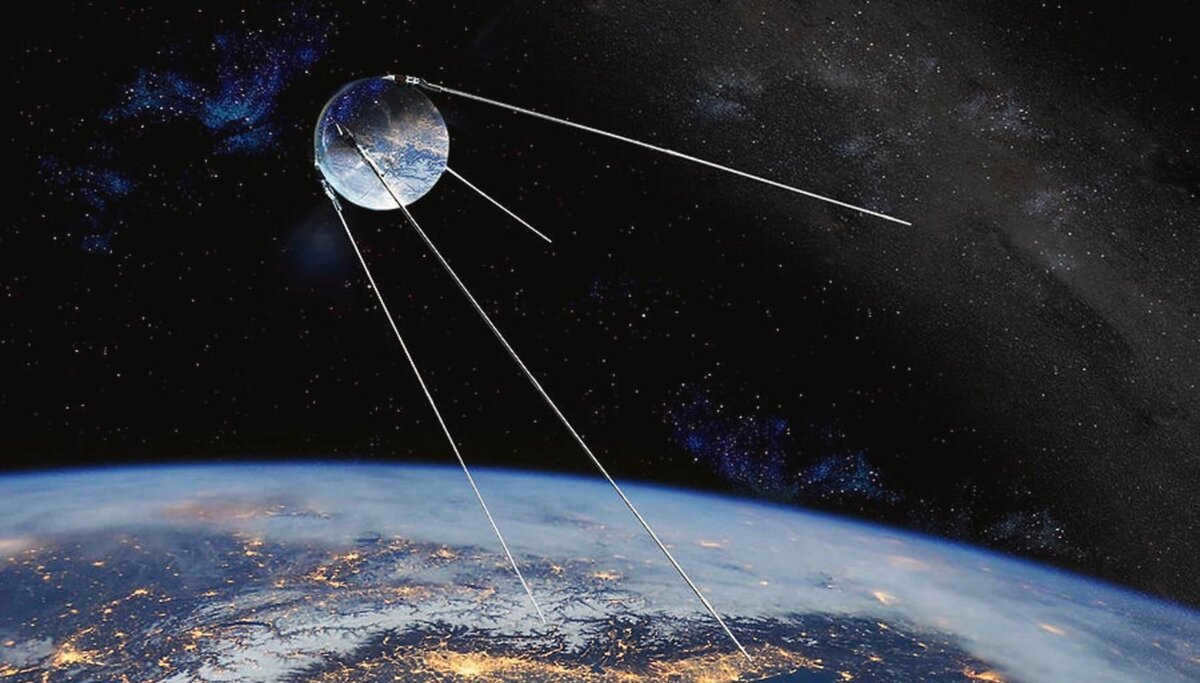
The first artificial satellite faced the risk of not being able to achieve the necessary velocity to enter orbit. This was due to a delay in one of the motors. Additionally, the control mechanism for emptying the tank failed after 16 seconds, leading to increased kerosene consumption and an early shutdown of the central motor.
Despite these challenges, the satellite still managed to successfully reach an elliptical orbit and remained there for a duration of 92 days. However, as it lost speed due to atmospheric friction, it gradually descended in altitude until it eventually burned up in the dense layers of the atmosphere.
The creation and utilization of the initial satellite is quite a fascinating fact on its own. Nevertheless, there are several other intriguing aspects connected with it:
- PS-1 was launched on October 4, 1957, marking the commencement of the space era. In addition, in the Russian Federation, this date is celebrated as Space Troops Day.
- The device was named PS-1, which was decoded as “Simplest Sputnik-1.”
- The apparatus was launched from the largest cosmodrome, situated in modern-day Kazakhstan, known today as “Baikonur.”
- A multitude of scientists participated in the creation of the device, with Sergei Korolev leading the project. It is noteworthy that the renowned scientist had previously spent 6 years in prison before embarking on this endeavor. However, he was later exonerated.
- After the satellite was launched, there was a suggestion to nominate its creator for the Nobel Prize. However, the name of the designer was kept secret by the authorities in the USSR.
- Weighing approximately 80 kilograms, the satellite took the form of a ball and was equipped with 4 antennas positioned at the edges.
- The PS-1 remained in outer space for a duration of 4 months, concluding its flight on January 4, 1958. Throughout this period, the device covered an impressive distance of nearly 60 million kilometers.
- The PS-1 was launched using the R-7 ballistic missile, which the creators referred to as “the seven”.
- In 2007, a monument was erected in the city of Korolev to honor the creator of the satellite. This commemoration coincided with the anniversary of the PS-1’s creation.

